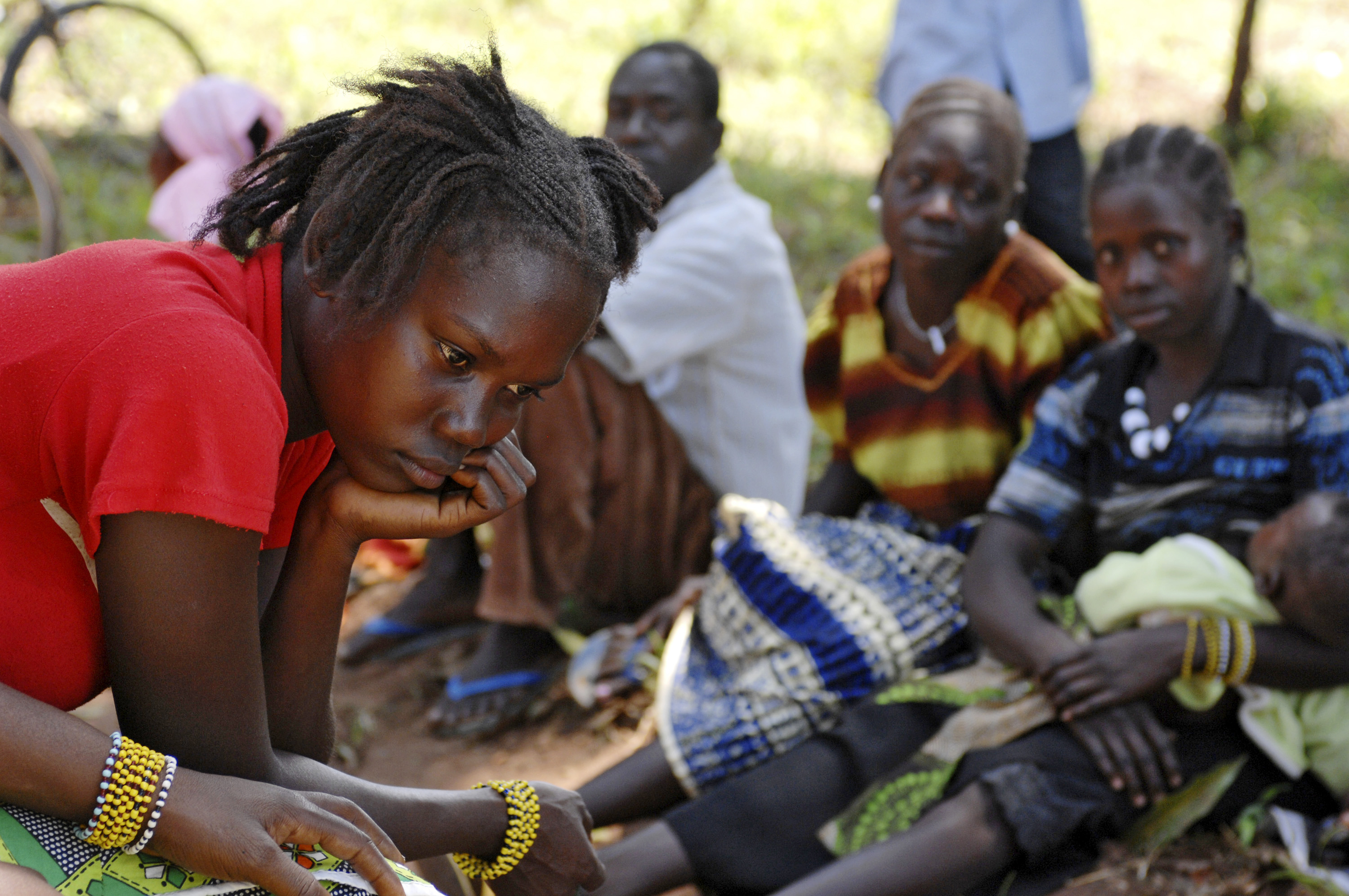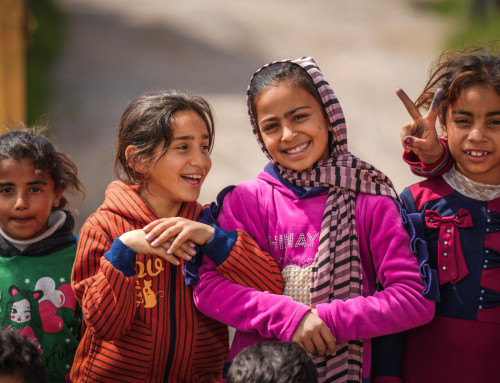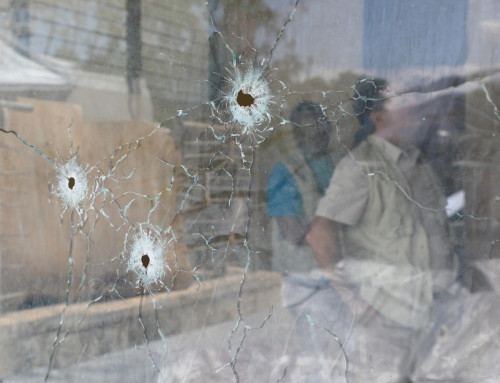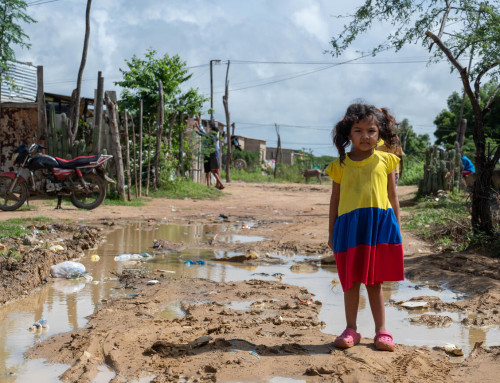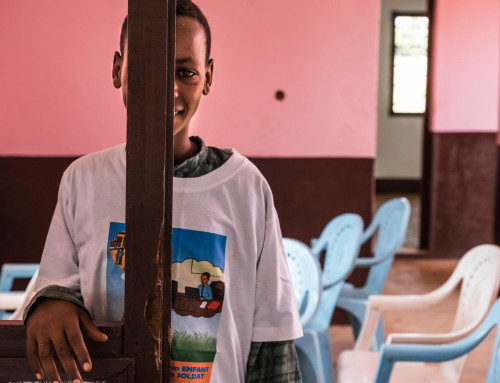What is the Lord’s Resistance Army (LRA) and what are its aspirations?
The Lord’s Resistance Army (LRA) operating under the command of Joseph Kony was formed more than twenty years ago, and originally claimed to fight against the marginalisation of ethnic Acholi from the northern region of Uganda. Initially, it intended to establish a theocratic state. However, today, the political agenda of the group is unclear.
The LRA maintains organizational cohesion through a mixture of violence justified by a cultic ideology which posits individuals outside the LRA as being impure and therefore deserving death; spiritualism which promotes the authority and appearance of clairvoyance of Joseph Kony; and severe punishments for indiscipline or disloyalty.
How does the LRA recruit children and what is their role?
With the exception of a handful of senior officers, nearly all individuals within the LRA were forcibly abducted. Since the early 1990s, the LRA leadership adopted a policy of forced recruitment, particularly of children. Abducted girls and boys are beaten into submission, are sometimes required to commit atrocities against others, and serve as combatants as well as cooks, porters, and spies. Many children are killed and wounded during fighting, others are killed because of their unwillingness to obey orders or because they try to escape.
What are other violations are committed against children by the LRA?
The LRA commits all six violations identified by the Security Council and Secretary-General as grave violations against children in the context of war.
These include:
- Killing or maiming of children;
- Recruitment or use of children as soldiers;
- Sexual violence against children;
- Attacks against schools or hospitals;
- Denial of humanitarian access for children;
- Abduction of children.
Amongst the most egregious violations committed by the LRA are killing and maiming, sexual violence, recruitment and use and abductions. Sexual violence is a systematic characteristic of the armed group’s modus operandi, and includes rape, use of girls as sex slaves, and sexual exploitation. For the survivors of sexual violence, especially girls returning with babies, stigmatisation is a great challenge as their families and communities often find it difficult to accept them. The LRA is the primary cause of internal displacement for the 440 000 persons affected by the armed group.;
Where is the LRA operating?
The LRA has not been operational in Uganda since the cessation of hostilities in 2006. Most of the LRA combatants are currently in the eastern Central African Republic around the Zemongo Reserve and in Haut and Bas Uele in northern Democratic Republic of the Congo, as well as along the border areas of South Sudan, notably on the fringes of Western Equatoria and possibly Western Bahr El Ghazal. The area of operation is roughly the size of Uganda. Since 2009, the LRA composed of an estimated 500 combatants is operating in several mobile units who are very difficult to trace. Moreover, LRA- affected areas are difficult to access and State presence and basic infrastructure is extremely weak.
What has the United Nations done to address the violations committed against children by the LRA?
Over the past three years, United Nations child protection actors assisted hundreds of children who escaped from the LRA. They provide reintegration and rehabilitation programs including basic care and skill trainings as well as assist in family reunification efforts.
The United Nations actors are monitoring and reporting on grave violations committed against children by the LRA. Reports are submitted to the Security Council Working Group on children and armed conflict, and used by child protection actors to advocate in favour of the protection of LRA-affected children. A regional child protection focal point system ensures that there is a coordinated approach across borders to monitor report and respond to the LRA threat.
In response to concerns raised by the United Nations over the procedure for repatriation of children rescued or escaped from the LRA, the Ugandan Army established Standard Operating Procedures for the reception and hand-over of children and vulnerable women separated from LRA. These SOPs will ensure that former LRA children are handed over to civilian child protection actors as soon as possible, so that they may be given assistance and sent home.
In addition, the United Nations is developing a cross-border communication campaign encouraging combatants to defect and disarm. By using radio programme and leaflets, the Mission has convinced hundreds of rebel including children to move back to civilian life, although this is a dangerous undertaking.
Why is a military action against the LRA risky?
National armies of Uganda, the Democratic Republic of the Congo and South Sudan are on a regular basis conducting military operations against the LRA and have been partly effective in weakening the rebels. However, attacking the LRA is a very tricky proposition because there are many children in the ranks of the LRA and repercussions on the civilian populations have to be carefully calibrated. The United States should in their support to Ugandan Armed Forces and others ensure that Operations conform to international humanitarian law protection standards. Moreover, military operations will not be enough to address the threat of LRA.
What can I do to help the children affected by the LRA?
If people want to help, they can support UNICEF programs for children who have escaped the LRA to rebuild their lives and their communities throughout Central Africa.

